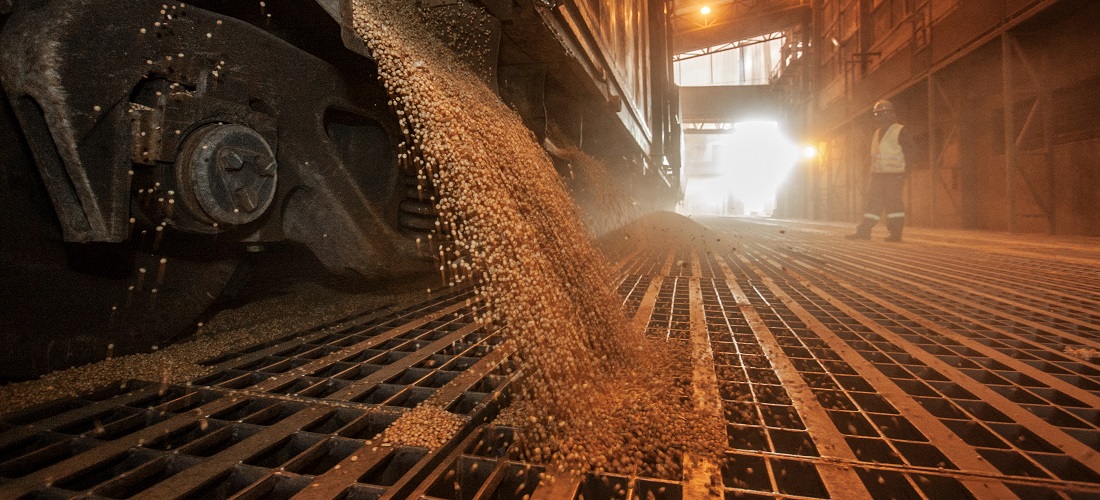
Agribusiness Exports Remain Steady, but Imports Rise 5%
Oct, 09, 2024 Posted by Gabriel MalheirosWeek 202439
Brazil’s agribusiness exports held steady from January to September, totaling USD 126 billion, in comparison to the same period in 2023. However, imports surged by 5%, reaching USD 27.8 billion.
On the export side, soy and corn experienced significant setbacks. Despite exporting more soy, Brazil saw a 14% drop in revenue due to falling international prices.
Corn exports, following a record-breaking 2023 in which Brazil surpassed the United States, are now constrained by a smaller domestic harvest and increased competition from other producers. As of September, corn exports were down by 41%.
On the import front, national spending on food alone rose to USD 12 billion, 17% higher than in 2023.
Key drivers of this increase were wheat, milk, fruit, and olive oil. Wheat imports reached 5.1 million tonnes, a 59% rise compared to the same period last year.
Spending on fruit imports climbed to USD 753 million, up by 38%, while olive oil imports surged by 57%, totaling USD 637 million.
While Brazil saw increased farming export revenues to most global regions, Asia and South America were exceptions.
Soy, coffee, and sugar played pivotal roles in overall performance. However, major soy importers like China reduced their trade with Brazil. Chinese spending on Brazilian soy dropped by 12%, despite importing 6% more in volume. Total soy exports reached 89.5 million tonnes, a 3% increase compared to 2023.
Coffee importers, including the United States and the European Union, spent more in Brazil due to skyrocketing international prices for the commodity. Brazilian coffee revenues hit USD 7.7 billion by September, marking an 86% increase.
Middle Eastern countries, key sugar buyers, strengthened their trade ties with Brazil this year. The region’s sugar imports from Brazil amounted to USD 2.65 billion, a 68% rise.
The chart below allows readers to compare Brazilian sugar long-haul exports registered at maritime ports in the first eight months of the last four years. The data was extracted from the DataLiner intelligence service, a Datamar product.
Sugar Exports | Jan-Aug 2021 vs Jan-Aug 2024 | TEUs
Source: DataLiner (click here to request a demo)
A favorable international market and Brazil’s strong sugar production helped drive revenues up to USD 13.9 billion by September, a 36% increase over 2023.
Brazil lost ground in two key markets this year: China and Argentina. China’s share of Brazilian agribusiness exports fell to 33%, down from 36% last year, when including products like food, pulp, and wood.
Argentina, which accounted for 3% of Brazil’s export revenue in 2023, now represents just 1%. While Argentina imported less from Brazil, Brazilian spending on Argentine goods increased. In 2023, Argentina imported large amounts of Brazilian soy but exported little wheat. This year, with a strong soy harvest, Argentina has reduced imports while ramping up wheat exports. Brazil has already imported 3.23 million tonnes of Argentine wheat, an 86% increase over last year.
The external market has also been highly favorable for Brazil’s meat exports. By September, revenues from these proteins reached USD 17.7 billion, a 7% rise from 2023, with beef seeing the most significant growth.
As the world’s largest soybean producer and exporter, Brazil has turned to the international market, importing 818,000 tonnes of soybeans this year, a staggering 524% increase.
Agrochemical imports have also surged, with 528,000 tonnes imported by September, a 34% increase compared to the three-year average for the period.
Source: Folha de S. Paulo
Original reporting: https://www1.folha.uol.com.br/colunas/vaivem/2024/10/importacao-brasileira-de-alimentos-cresce.shtml
-
Oil and Gas
Dec, 29, 2021
0
Mexico will no longer export oil from 2023 onwards
-
Blog News (ENG)
Jan, 24, 2025
0
Rio Grande do Sul Exports Rise in Volume but Plunge in Value in 2024
-
Economy
Mar, 31, 2023
0
China’s strong demand for commodities to exceed post-2008 crisis, mining giant says
-
Ports and Terminals
Sep, 22, 2023
0
Ports minister announces three new projects for Port of Santos; find out more

